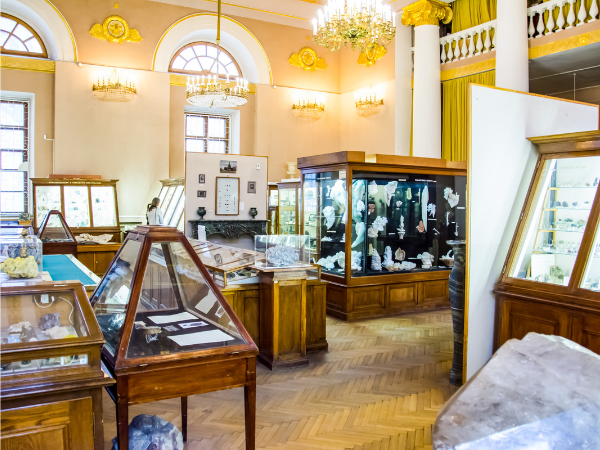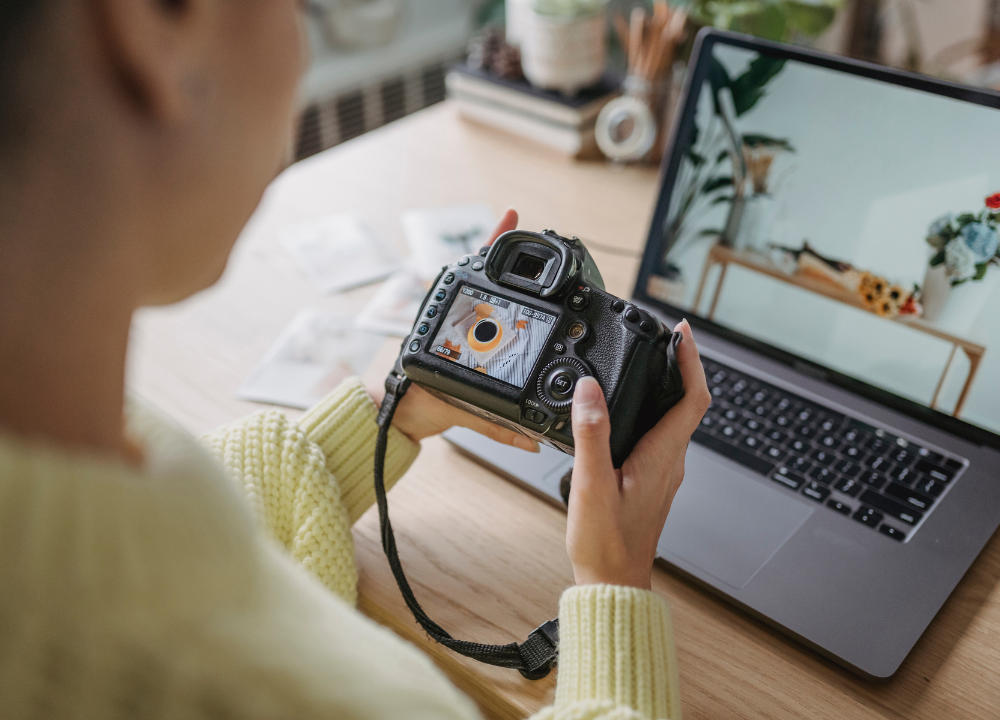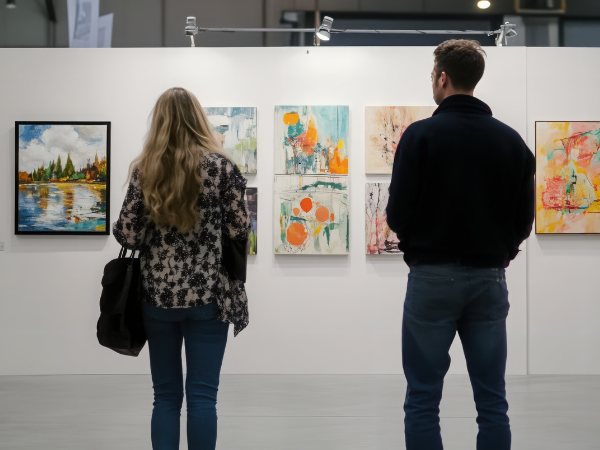As an educator, mastering the art of storytelling can transform your lessons and deepen your students’ understanding. In this guide, you’ll discover simple yet powerful techniques to make every museum experience engaging and meaningful.
Role Of Storytelling In Museums
Storytelling plays a vital role in museums. It transforms facts and objects into meaningful experiences. Educators use stories to connect visitors with exhibits on a deeper level. Stories help visitors understand the context, culture, and history behind each display.
Enhancing Visitor Engagement
Stories capture attention. They make visitors curious and eager to learn more. Without stories, exhibits may seem like isolated facts or objects. Storytelling builds a bridge between the visitor and the display.
- Creates emotional connections: Stories evoke feelings, making visitors care about the subject.
- Improves memory: People remember stories better than plain information.
- Encourages questions: Visitors become active participants, not just observers.
- Caters to diverse audiences: Stories can be adapted for children, adults, and different cultural backgrounds.
Here is a simple table showing how storytelling affects visitor engagement:
| Visitor Type | Without Storytelling | With Storytelling |
|---|---|---|
| Children | Bored, distracted | Curious, attentive |
| Adults | Passive viewing | Active learning |
| Tour Groups | Limited interaction | Group discussions |
Bringing Exhibits To Life
Storytelling adds life to museum exhibits. It turns static objects into living tales. Visitors see beyond the surface and imagine the stories behind each artifact.
For example, a simple pottery piece can tell the story of the artist, the culture, and the daily life of people long ago. This approach helps visitors relate to history and culture more personally.
Key ways storytelling brings exhibits to life:
- Contextualizes objects: Explains why an item is important or unique.
- Humanizes history: Shares personal stories or legends connected to the exhibit.
- Uses sensory details: Describes sights, sounds, and smells to create vivid images.
- Incorporates different media: Combines audio, video, and interactive displays to enrich the story.
Educators can use simple storytelling techniques such as:
- Asking open-ended questions
- Using descriptive language
- Including relatable characters
- Building suspense or surprise
These methods help visitors connect emotionally and intellectually with exhibits, making their museum experience unforgettable.
Techniques For Effective Storytelling
Storytelling in museums brings exhibits to life. It helps visitors connect with history, art, and culture. Effective storytelling uses clear methods to engage and educate. Educators can use simple techniques to make stories memorable and easy to follow.
Using Narrative Structures
Narrative structures organize stories to keep listeners interested. They give a clear path from beginning to end. This makes complex information easier to understand. A good story has a clear flow with a start, middle, and end. This helps visitors remember key points.
Common narrative structures include:
- Chronological: Telling events in the order they happened. This is great for history exhibits.
- Problem and Solution: Presenting a challenge and how it was solved. It sparks curiosity.
- Cause and Effect: Showing how one event leads to another. Useful for science or social studies.
- Personal Stories: Sharing experiences of real people related to the exhibit. It creates emotional connection.
Using a clear narrative helps visitors follow the story without confusion. It also encourages questions and deeper thinking.
| Narrative Structure | Best For | Effect on Visitors |
|---|---|---|
| Chronological | Historical events, timelines | Easy to follow, builds understanding of sequence |
| Problem and Solution | Inventors, social issues, discoveries | Engages curiosity, highlights creativity |
| Cause and Effect | Science, environment, social changes | Explains relationships clearly |
| Personal Stories | Biographies, cultural exhibits | Creates empathy, emotional impact |
Incorporating Multimedia Elements
Multimedia elements make stories more exciting and easier to understand. Combining images, sounds, and videos helps visitors see and hear the story. This appeals to different learning styles.
Types of multimedia to use:
- Images and Photographs: Show details and add visual interest.
- Audio Clips: Include interviews, sounds, or music to create atmosphere.
- Videos: Demonstrate processes or show events in action.
- Interactive Screens: Let visitors explore information at their own pace.
Multimedia can be simple or advanced. Even small additions improve engagement. For example, a short audio clip can bring a historical figure’s words to life. Interactive screens allow visitors to choose what they want to learn about.
Here is a quick comparison of multimedia types and their benefits:
| Multimedia Type | Benefit | Best Use |
|---|---|---|
| Images | Visual interest, detail | Art, artifacts, nature exhibits |
| Audio | Atmosphere, engagement | History, culture, music |
| Video | Demonstration, storytelling | Science, events, processes |
| Interactive | Personalized learning | All topics, visitor involvement |
Crafting Stories For Diverse Audiences
The art of storytelling in museums holds the power to connect visitors with history, art, and culture in meaningful ways. Crafting stories for diverse audiences ensures that each visitor, regardless of age or background, finds value and engagement in the experience. Stories must be flexible, clear, and respectful to reach different groups effectively.
Adapting Stories For Children And Adults
Stories for children need to be simple, vivid, and interactive. Use clear language and short sentences to keep their attention. Children respond well to stories with characters, emotions, and action. Visual aids like pictures or props help make the story come alive. For example, a story about an ancient artifact can include a fun character who “found” the object.
- Use simple words. Avoid complicated terms.
- Include questions. Encourage children to guess or imagine.
- Keep stories short. Children have shorter attention spans.
Adults prefer stories with more detail and context. They appreciate facts, connections, and deeper meanings. Storytellers should include historical background, cultural significance, and multiple perspectives. Adults enjoy stories that challenge their thinking or reveal new insights.
| Audience | Storytelling Approach | Key Elements |
|---|---|---|
| Children | Simple and engaging | Short sentences, vivid characters, visual aids |
| Adults | Detailed and thoughtful | Context, facts, multiple perspectives |
Matching the story style to the audience helps keep everyone interested. It also respects their different learning needs.
Addressing Cultural Sensitivities
Respect is vital when telling stories about different cultures. Museums often display objects or histories from many groups. Educators must handle these stories with care to avoid stereotypes or misunderstandings. Research and consultation with cultural representatives add authenticity and respect.
Key practices include:
- Use respectful language. Avoid terms that may offend or simplify cultures.
- Highlight diverse viewpoints. Show multiple sides of a story.
- Correct inaccuracies. Update stories based on new research or feedback.
- Honor traditions. Include cultural meanings and practices behind objects or events.
Here is a simple guide to address cultural sensitivities in storytelling:
| Step | Description |
|---|---|
| Research | Learn about the culture from reliable sources. |
| Consult | Talk to community members or cultural experts. |
| Review | Check stories for bias or mistakes. |
| Respect | Use language and tone that honor the culture. |
Cultural sensitivity builds trust. It creates a welcoming space for all visitors to learn and appreciate.
Interactive Storytelling Methods
Interactive storytelling methods bring museum exhibits to life. They turn passive viewing into active learning. These methods help visitors connect with stories deeply. Educators play a key role in creating these experiences.
Guided Tours And Role-playing
Guided tours offer more than facts. They create a journey through time and ideas. Educators lead visitors, sharing stories behind exhibits. Adding role-playing makes tours even more engaging. Visitors step into characters’ shoes. They act out scenes or decisions from history or art.
Benefits of guided tours with role-playing:
- Enhances empathy by experiencing different perspectives
- Encourages active participation and questions
- Improves memory retention through acting and storytelling
- Builds social skills by interacting with others
Here is a simple table outlining key elements:
| Element | Purpose | Example |
|---|---|---|
| Storytelling | Explain exhibit background | Describe ancient artifacts’ use |
| Role-Playing | Bring stories to life | Act as a historical figure |
| Guided Interaction | Encourage questions and discussion | Ask visitors’ opinions |
Educators should prepare simple scripts and clear roles. Visitors feel more confident joining in. Role-playing suits all ages but works best with children and teens. It makes learning fun and meaningful.
Hands-on Activities
Hands-on activities let visitors touch, build, or create. These methods make abstract ideas concrete. Visitors learn by doing, which boosts understanding and enjoyment.
Examples of hands-on activities include:
- Creating replicas of artifacts using clay or paper
- Assembling puzzles related to exhibits
- Using interactive digital screens to explore stories
- Conducting simple science experiments
Why hands-on activities work well:
- Engage multiple senses, improving focus
- Encourage teamwork and sharing ideas
- Allow visitors to explore at their own pace
- Help explain complex concepts clearly
Here is a quick comparison of activity types:
| Activity Type | Age Group | Learning Focus |
|---|---|---|
| Crafting replicas | Children, Teens | History, Art |
| Puzzle assembly | All ages | Problem-solving |
| Digital interaction | Teens, Adults | Technology, Story exploration |
| Science experiments | Children, Teens | Science concepts |
Hands-on activities make museums dynamic spaces. Visitors remember lessons longer. Educators can adapt activities to suit exhibit themes. Simple materials and clear instructions help everyone join in easily.
Training Educators In Storytelling
The art of storytelling in museums brings exhibits to life. Educators play a key role in making stories clear and memorable for visitors. Training educators in storytelling helps them connect with diverse audiences. It builds skills to share history, art, and science in engaging ways.
Developing Communication Skills
Strong communication is the foundation of effective storytelling. Educators must learn to speak clearly, use expressive body language, and listen actively. These skills help keep visitors interested and involved. Training programs often include exercises to practice speaking and nonverbal cues.
Key communication skills for storytelling include:
- Clarity: Using simple words and short sentences.
- Voice modulation: Changing tone and pace to add emotion.
- Body language: Gestures and facial expressions to support the story.
- Active listening: Responding to visitor questions and feedback.
One way to develop these skills is through role-playing. Educators take turns telling stories and receive feedback from peers. This method builds confidence and highlights areas for improvement.
| Skill | Practice Activity | Benefit |
|---|---|---|
| Clarity | Explain an exhibit to a child | Simple language, clear message |
| Voice modulation | Read a story aloud with emotion | Engages listener interest |
| Body language | Use gestures during a presentation | Supports understanding |
Developing these communication skills helps educators make stories vivid. Visitors remember stories better when told with energy and clarity.
Storytelling Workshops And Resources
Workshops offer hands-on learning for educators to enhance storytelling techniques. They provide tools, tips, and practice in a supportive environment. Museums and educational organizations often host these sessions.
Common topics covered in storytelling workshops include:
- Crafting a narrative around museum objects
- Using sensory details to create vivid images
- Adapting stories for different age groups
- Incorporating interactive elements
Workshops may also include guest speakers, such as professional storytellers or museum experts. This exposure broadens educators’ ideas and methods.
Resources to support ongoing learning include:
- Storytelling guides: Step-by-step instructions and examples
- Video tutorials: Demonstrations of storytelling in action
- Online forums: Communities for sharing stories and tips
- Books and articles: Research on museum storytelling techniques
Using these resources, educators can practice storytelling outside workshops. Regular practice builds confidence and skill over time.
| Resource Type | Description | Access |
|---|---|---|
| Workshops | Interactive sessions with experts | Local museums, cultural centers |
| Guides | Written instructions and examples | Free online, museum websites |
| Video Tutorials | Visual demonstrations | YouTube, educational platforms |
| Online Forums | Community discussions | Social media groups, websites |
Well-trained educators create memorable experiences. Storytelling workshops and resources keep their skills fresh and effective.




